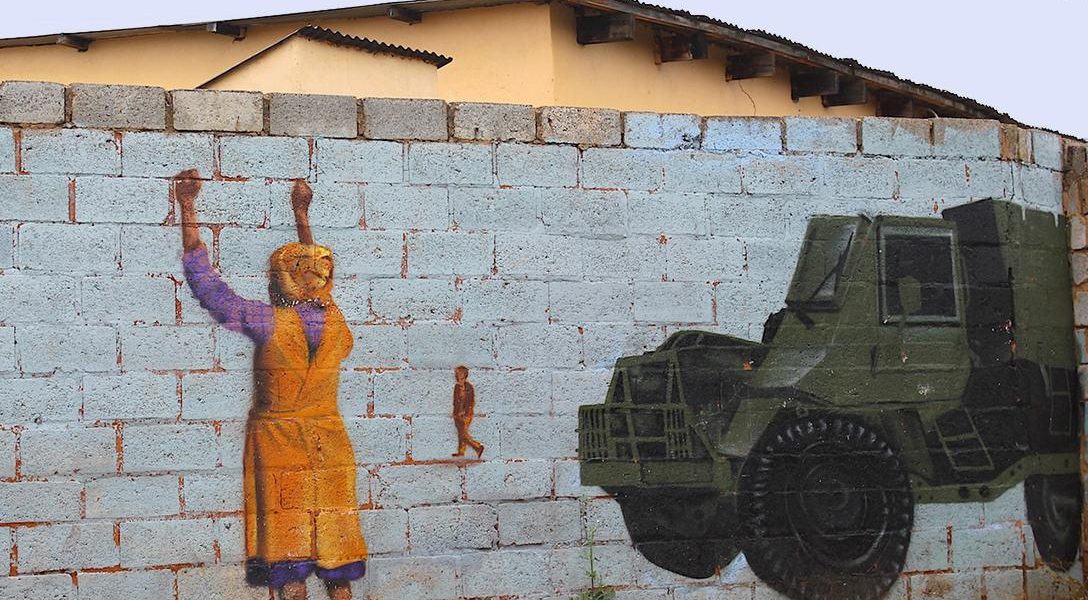Hearts of Darkness, Part 3: The NY Times as Apologist for Apartheid
Excerpt from The Hearts of Darkness: How White Writers Created the Racist Image of Africa
Part 3 of our series is about what The New York Times said — and, more important, what it did not say — about apartheid, South Africa’s vicious system of legalized racism, slavery, sadism, and plunder.
This excerpt, the final part of our series, is about what The New York Times said — and, more important, what it did not say — about apartheid, South Africa’s system of legalized racism, slavery, sadism, and plunder. The articles discussed were published between 1923 to 1960, and most were sympathetic to the idea of apartheid.
One author described the segregation and disenfranchisement as an important intermediate step, without which “modern European civilization is apt to be to the semi-civilized native of much the same use as a razor in the hands of a monkey.”
WhoWhatWhy Introduction by Milicent Cranor
The third of three excerpts from The Hearts of Darkness: How white Writers Created the Racist Image of Africa by Milton Allimadi (black Star Books Co., 2016). Chapter 9, The New York Times as Apologist for Apartheid. (The excerpt has been lightly edited and compressed.) For Part 1, please go here; for Part 2, go here.
“A native vote is absurd…. These people’s grandfathers were sometimes cannibals. How do they vote? What do they vote for?” — Gabriel Teixeira, Governor-General of Mozambique, tells Albion Ross, New York Times correspondent, in April 1954.
When Western newspapers, such as The New York Times, started sending professional writers to cover Africa, their writings were Eurocentric and informed by the accounts of the early 18th and 19th century travelers.
One of the most important stories in Africa at the turn of the century was apartheid in South Africa and just as the so-called explorers once produced a narrative to justify the conquest and colonization of Africa, modern professional writers disseminated journalism that rationalized South Africa’s policy of racial segregation and the economic exploitation of the African population.
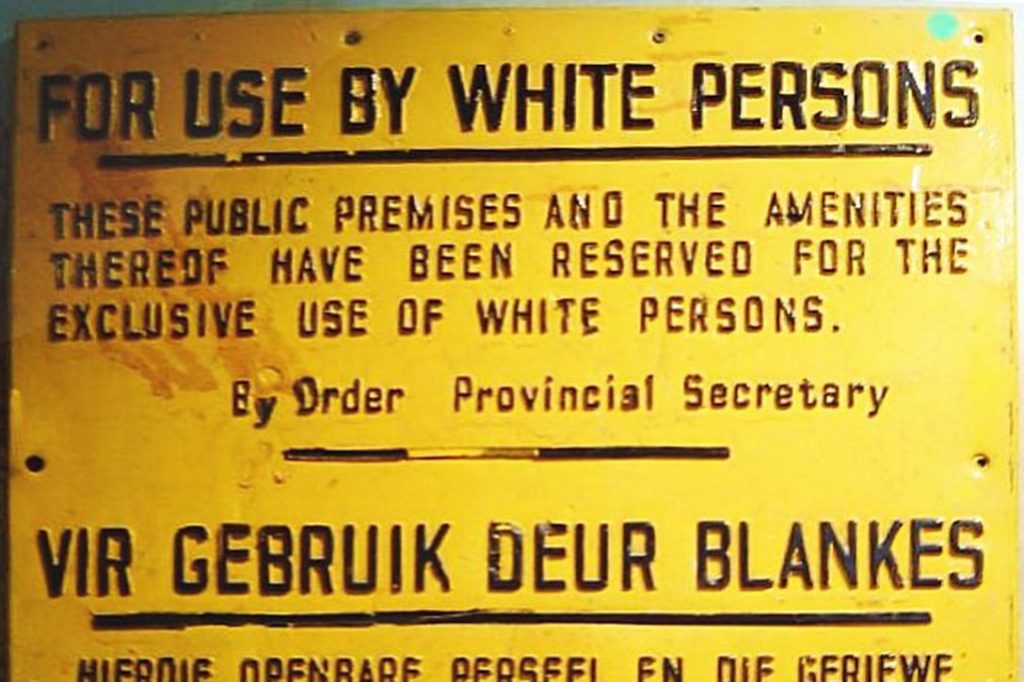
Photo credit: Dewet / Wikimedia (cropped)
The Union of South Africa was formally created in 1910. It comprised the Cape Colony, Natal, the Orange Free State and the Transvaal.
The past rivalries, wars, massacres, and competition for mineral wealth and land between settlers from different European nations — primarily, England and Holland — were subsumed. The focus became the subjugation of the African majority in order to ensure the continued exploitation of the territory’s vast resources by the white minority.
Africans were disenfranchised and by the end of the second decade of the 20th century, the European settlers branded South Africa as a “white” country even though, at their peak population, they comprised about 20 percent of the population.
Selling Apartheid to the US
.
The architects of the racist regime — who now set out to codify the laws that legalized racial discrimination — assured Western journalists that the system was best for the white and the black populations.
One article that made the regime’s case was written by Wyona Dashwood, and appeared in The New York Times, on May 26, 1926, under the headline, “Colors Clash in South African Union.”
Even the headline was misleading, using the term “clash,” which implied a confrontation of equals when, in fact, it was one-sided. The white architects and beneficiaries of apartheid were the subjugators and the African population the victims.
Dashwood’s article discussed a proposal by James Barry Hertzog, leader of the National Party in South Africa, to segregate and disenfranchise blacks in the Cape Province as a way of dealing with the “native factor,” as Dashwood put it.
So South Africa begins to feel the menace of its indolent, ignorant, five and a half million [“natives,”] upon the wise disposal of whom depends the prosperity of its future.”
Dashwood was sympathetic to the arguments put forth in support of apartheid. She was presumably influenced by race relations in the United States where all sorts of justifications were also maintained for the subjugation of African Americans.
“The idea behind it,” Dashwood wrote, of Hertzog’s plan, “is to give the native a chance to develop along his own lines and afford him the opportunity to lay a sound national foundation on which to ground the more advanced economic, social and political systems of the white man’s civilization.”
The article did not address why the white population had to be allocated the lion’s share of the nation’s financial and material resources in order to accomplish such a benevolent national program.
“Without this intermediate step,” Dashwood’s article continued, “it is held, modern European civilization is apt to be to the semi-civilized native of much the same use as a razor in the hands of a monkey.”
The reservations where Africans were shipped off to — some were located on arid land in Bechuanaland, Basutoland, and Swaziland — were formed to stop “tribal fighting,” according to Dashwood’s article.
Transkei, another reservation, was formed to “clear other land for mining and farming.” Dashwood’s article never discussed the fact that Africans had lived on and owned the land from which they were being forcefully displaced in one of the most vicious ethnic-cleansing campaigns designed to expropriate wealth for the benefit of the white population. The Bantustans [lands set aside for black Africans] formed a pool of dependent laborers for South Africa’s mines and white-owned commercial farms.
The architects of the racist regime knew how to frame the narrative of apartheid for the American writer. Dashwood’s article repeated well-established racist stereotypes about black people that many white American readers would have been familiar with.
To begin with, the “natives” had a problem of rapid “multiplication” of their numbers and a tendency to work “reluctantly,” Dashwood’s article claimed. Nevertheless, native labor had become a “necessity” in South Africa, not just a “convenience.”
This was because, according to Dashwood’s article — which conveyed Hertzog’s philosophy — the African workers “undermine the energy of the white youth”: white youth saw no need to work in a country that was blessed with abundant free “native” labor. So, going by Hertzog’s philosophy, Africans were lazy; yet, they also destroyed the work ethic of white youth — by working.
“I have long been fascinated by raw black men being flown from the bush, where some of them have probably never used or maybe seen a wheel, straight into Johannesburg for work in the mines.
Dashwood also informed her readers that when a black worker’s contract at the mine expired, he was kept under guard and not allowed to leave for five days “because of his propensity for stealing, and is allowed to only take soft clothing away with him; even his footwear must be left behind, for he is clever at secreting diamonds in his boot-heels.” (Dashwood did not explain that the African mine workers were detained for five days so that their stool could be examined for precious stones.)
Dashwood also wrote about how the Africans were ill-suited for the trappings of white civilization. After leaving the mines, “the African has scarcely resumed his life in the shaggy huts before he strips off every stitch of the white man’s garb. Presently, he shows no trace of even having tasted the life of the town,” she wrote.
“At Cape Town, the first landing you make, you look everywhere for the native,” Dashwood continued. “You realize at last that these fellows in wide trousers and straw hats are native grandees. You feel it is too bad to see the clothes of Western civilization on them. They do not compare in interest with the dashing young men who parade the streets of Johannesburg on Sundays in red blankets, tinkling and jingling with metal and ivory ornaments…”
“So South Africa begins to feel the menace of its indolent, ignorant, five and a half million [“natives,”] upon the wise disposal of whom depends the prosperity of its future.”
Dashwood wrote, “Segregation is the first definite policy advanced toward the solution of the South African dilemma. History keeps ominous records of what has happened whenever the native and colonists have been brought together — one or the other inevitably succumbing. In America, it was the native, in ancient Africa, the colonist. In Asia, Europeans have never established themselves, except as a small ruling caste. In South Africa, it remains to be seen.”
Twenty-two years after Dashwood first wrote about the beginning of the creation of the segregated regime in South Africa, in 1948, Apartheid became official policy. The country’s system of racial segregation and inequity in all aspects of social, cultural, economic and political life — in favor of the white population — was now formalized.
The Population Register, which was intended to classify every individual in the country into a specific racial grouping, was introduced under Prime Minister Johannes G. Strijdom. The allocation of public and private resources was determined, based on race.
White people were at the top of the racial hierarchy and enjoyed disproportionately larger allocation of public funds and the best quality healthcare, education, and public facilities. The black population, whose labor was directly responsible for creating the wealth, was allocated minimal resources; their schools, hospitals, and other public facilities were under-funded.
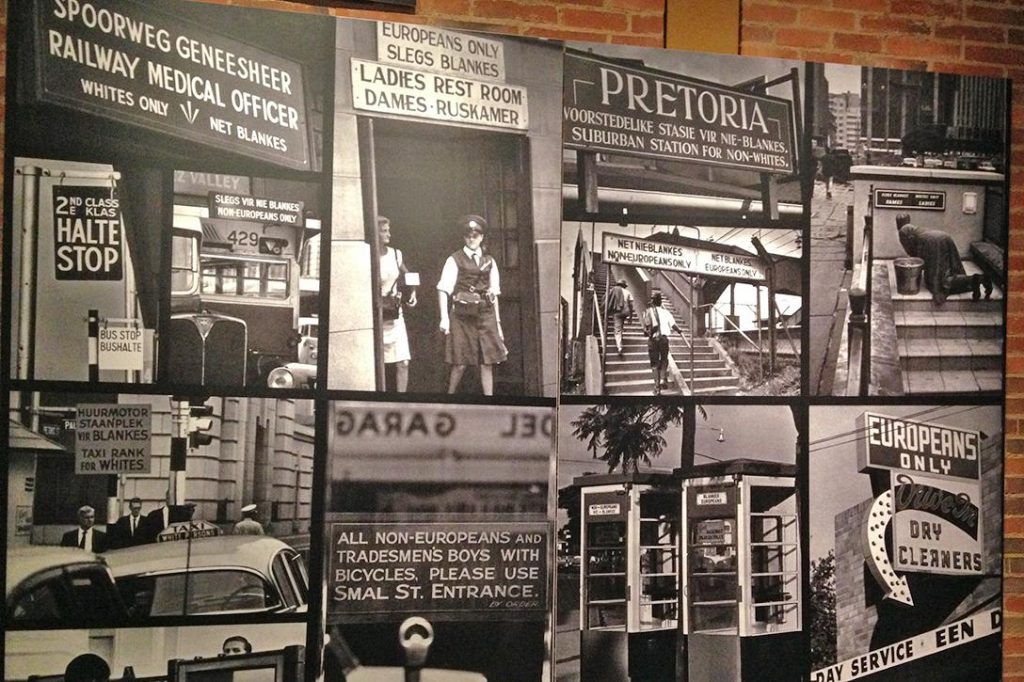
The so-called “coloreds,” who were the offspring of white and black parentage, were ranked above blacks. Asians were considered by the white regime as foreigners with no local roots and were not classified
The Population Register was the cornerstone of the apartheid racial classification scheme. It was intended to make it impossible for individuals who were borderline to be elevated into a “higher” racial ranking where she or he could enjoy increased benefits, privileges, and resource allocation that they were officially not entitled to, based on their racial designation.
The system created an incentive by rewarding people who could prove that they were not black; including those who were clearly black. It promoted self-hatred and inferiority complexes by placing a premium on lightness of skin.
The legacy of this policy has outlasted apartheid and even today black people in South Africa are one of the highest per capita consumers of skin-bleaching creams. (It is a phenomenon that is popular in many African countries.)
The absurdity of the Population Register was reflected in a New York Times article, published without a byline, on August 21, 1955. “In one half hour yesterday six Kimberley men who regarded themselves as colored were reclassified as negroes, thrusting them back to the bottom of the social ladder up which they had attempted to climb,” the article reported.
South Africa’s director of the census at the time, J.I. Raats, told the reporter that 7,000 people of “doubtful racial origin” had been classified and that 260, who were not happy with the racial categorization they had been placed in, said they would appeal.
“The classification is being done by specially selected officials picked for their impartiality, integrity and humanity,” the Times’ article claimed. An absurd statement considering the task at hand.
Apartheid laws intruded into every possible social space. In order to ensure that the African population was always controlled and under surveillance, in May 1957, the South African Parliament approved a “native law amendment bill,” empowering the minister of Native Affairs, Hendrik Frensch Verwoerd, to ban blacks from churches, clubs, hospitals, schools and other places, if he believed they would “cause a nuisance.”
In a New York Times article published on May 26, 1957, an apartheid regime official spoke to reporter Richard P. Hunt about the law’s intended purpose: “The sitting minister holds that these powers are needed to insure that the relations between black and white here be those of guardian and ward, and consistent with the policy of rigid racial segregation.”
The introduction of these laws that ultimately anchored South Africa’s police state under white minority regimes was reported in a detached and even sympathetic manner. Africans were never consulted to voice their views or provide reactions to include in the news accounts.
When Strijdom died, Verwoerd became prime minister on September 2, 1958. He was a former professor of applied psychology at Stellenbosch University and he became one of the staunchest advocates of apartheid. Verwoerd’s regime banned the African National Congress (ANC) and the Pan Africanist Congress (PAC) on March 30, 1960.
A Report Unusually Sympathetic to Black Africans
.
Under Verwoerd, the hated pass-laws were vigorously enforced. Africans lived under a permanent state of terror and were subjected to arbitrary arrests, as shown in a New York Times article, by Albert Hunt [No known relation to Richard P. Hunt, quoted above] under the headline, “Arrests Abound in South Africa,” published on April 1, 1959.
More than 1.25 million Africans were arrested every year for violations, ranging from not carrying the detested passes (the internal passports issued to blacks) to violations of labor regulations, curfew, and residency requirements. This meant that every black man in every major South African city was arrested on average once a year, Hunt reported in his article.
“The negro walks in constant danger of arrest for some technical offense,” Hunt reported.
“Thousands who have never so much as stolen a loaf of bread have records of ‘previous convictions’ that would make a hardened criminal in any other country shudder.”
The arrests were arbitrary and merciless as Hunt was able to show in his Times article when he discussed the fate of one elderly man:
“One warm summer evening, while cooking his supper on a kerosene stove, he stepped outside in his shirtsleeves to knock out his pipe on a curb. A pick-up van stopped and a young policeman demanded to see the old man’s pass. The old man argued in vain that the document was in his jacket, hanging inside the door. He was bundled into the van and taken to the nearest police station. The policeman refused even to allow him to enter his cottage to turn off the stove. Next day, he was fined 1 pound for being without a pass. If he was a younger man and was not able to pay his fine (in fact, his employer paid for him), he would have been given the choice of serving ten days in jail or two weeks in a potato farm and no one would have known what had happened to him.”
Chase Manhattan Comes to South Africa
.
By 1959, the apartheid system seemed so entrenched that its architects launched a campaign for foreign investment capital and attracted the attention of some leading American financiers and business executives. On February 11, 1959, a wire story appeared in the Times under the headline, “New Interest in Africa.” The article discussed the opening of the Chase Manhattan Bank, by its vice-chairman, David Rockefeller. The bank’s branch office was in Johannesburg.
The article reported, “Mr. Rockefeller said the opening of the branch here was an indication of the confidence we feel in the economic potential of South Africa.” There was no mention of any concern by Rockefeller about the apartheid system.
About a year later, the apartheid regime, the foreign correspondents stationed in South Africa and much of the outside world, were still oblivious to the wrathful rumblings of discontent, stirring within the oppressed black majority population.
On January 7, 1960, a New York Times article by Leonard Ingalls appeared under the headline, “South Africa Business Men Plan to Win World’s Goodwill.” According to the article, 25 prominent businessmen and industrialists had formed the South African Foundation to increase the “selling” of the country’s image in Europe and the United States.
The businessmen included Harry F. Oppenheimer, chairman of the powerful Anglo American Corporation and Charles W. Engelhard, who headed a Newark, New Jersey-based company that bore his name. Engelhard was described in a Time Magazine article as “one of the most powerful businessmen in South Africa.”
“They are concerned over foreign reactions to the Government’s policies, particularly those dealing with matters of race,” was how Ingalls euphemistically described apartheid in the article. “Boycotts of South African goods have been threatened abroad and it has been difficult to obtain investment capital from abroad,” he explained.
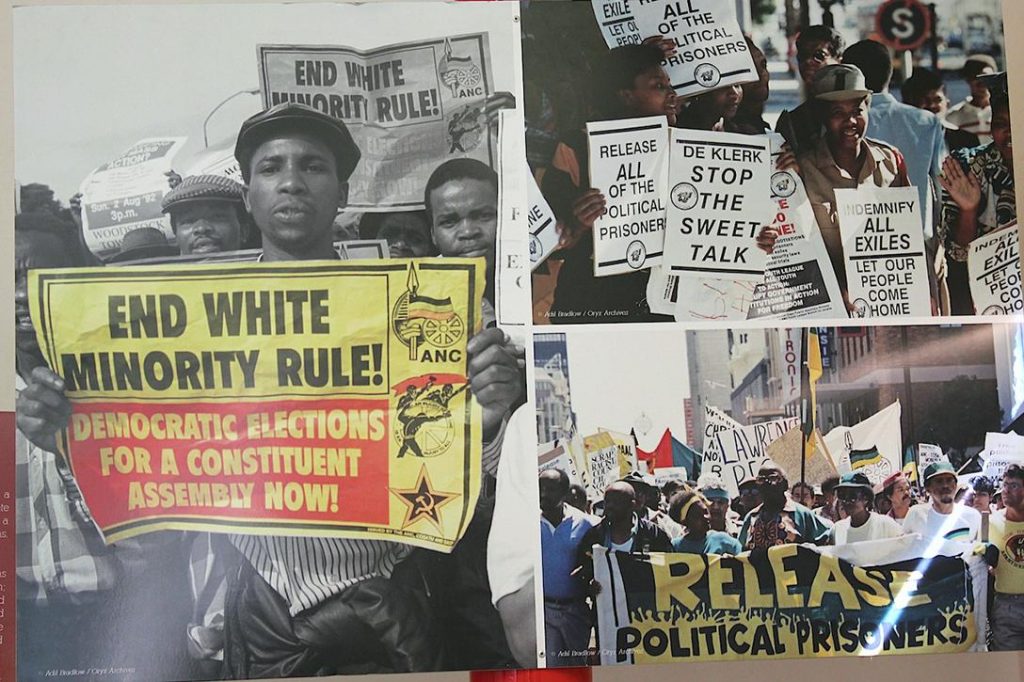
The eruption finally occurred on March 21, 1960, with the Sharpeville massacre. “50 Killed As Police Fire on Rioters,” declared the headline of a New York Times article on March 22, 1960, casting the victims as the villains.
The demonstration had in fact been peaceful until policemen started firing into the unarmed crowd. [This was made clear later. The Times published an account by Humphrey Tyler of Drum magazine on April 3 who said the demonstration was peaceful and little threat. Yet the crowds, including children, were machine gunned as they ran away.]
Continuing with the Times article of March 22, 1960: “The police opened fire today on thousands of Africans besieging a police station in Sharpeville, thirty miles south of Johannesburg,” the article stated. “The Africans were demonstrating against South Africa’s laws requiring Africans to carry passes at all times.”
The crowd had stoned the police and the armored cars guarding their station. The police, hiding behind a wire fence, then opened fire into the crowd — according to the article.
Initial reports placed the dead at 25 with 50 wounded. The figures were later upgraded to 72 dead with 184 wounded. A senior police official was quoted in the Times article: “I don’t know how many we’ve shot. If they do these things, they must learn the hard way.”
[Ed: It is interesting that, technically, the author of the March 22 article had told the truth — the crowd had indeed stoned the police — and yet created a false picture. Only a few people out of thousands assembled had thrown a few stones, and the police were hardly in danger.]
In the days following the uprising, foreign investors fled the South African financial market and the value of shares on the Johannesburg Stock Exchange plunged precipitously; losses amounted to $300 million, in only one week. For a short period the regime was staggered by the defiance of the Africans who had confronted the police, the enforcers of apartheid.
“The racial differences that have plagued South Africa throughout its history,” the Times’ article observed, again using euphemism and apportioning blame equally between victims of apartheid and perpetrators, “have finally plunged the nation into a terrible convulsion.”
The Sharpeville uprising exposed the apartheid regime’s weakness and over-dependence on foreign Western capital and trade. This revelation would play a major role in its demise, decades later, with the global divestment campaign.
Still, apartheid endured for 34 more years after the Sharpeville massacre and more blood was to flow.
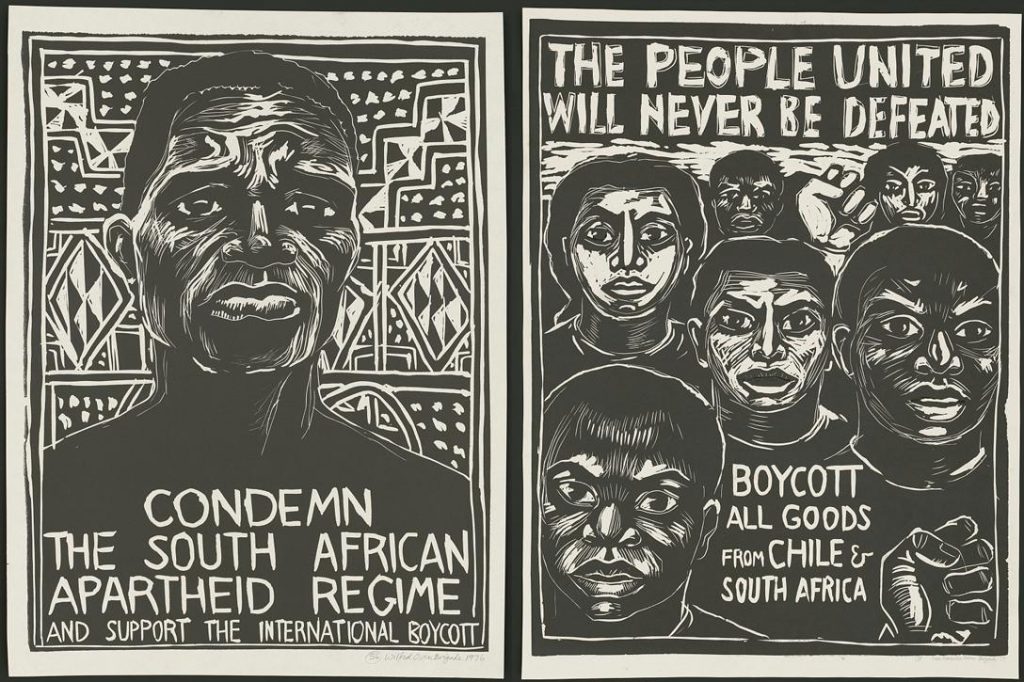
Correspondences stored in The New York Times‘ archives reveal that Leonard Ingalls, a reporter who covered South Africa for the newspaper in the mid-1950s, was concerned and wanted to avoid describing Africans in pejorative terms in his articles; so he asked for guidance from foreign news editor, Emanuel Freedman.
“You asked me before I left New York to give you, after I had been here awhile, my impression,” he wrote, in a letter dated June 14, 1956. “Perhaps the most obvious and fundamental fact to strike the newcomer is that the Negro, by sheer weight of numbers, will take control of Sub-Saharan Africa within the next generation or two.”
Ingalls’ letter also revealed that he sought the views of Africans during his reporting. “As you know, white South Africans call themselves and all other white persons Europeans. Sometimes, in trying to defend their white supremacy policies, they will argue that South Africa has been their home for 300 years and that they must fight — and they mean that literally — to preserve white civilization in South Africa because they have no place to go,” he wrote.
Ingalls’ letter went on to say, “I was talking with an African friend about this argument recently and his observation was: ‘They call themselves Europeans, let them go to Europe.’ Usually when the question of political, social, economic or educational opportunities for Africans is raised with white persons south of the Sahara they reply: ‘You don’t expect us to give them to savages, do you?'”
Ingalls continued: “That is fair enough in a sense. There is a big ‘but’ attached though, and that there doesn’t seem to be very much enthusiasm for getting on with the job of helping the savages to better themselves.”
Ingalls pointed out in his letter that the whites in South Africa seemed not to have learned anything from the Mau Mau uprising in Kenya, where Africans were fighting against whites who had ousted the Kikuyu people and robbed them of their fertile ancestral farmlands.
“I have talked to quite a few literate, intelligent Africans,” Ingalls continued. “My recollection is that they have said they do not want to force the white man out of Africa. What they do want is the help of the white man in improving the lot of their people. They do not think they are getting that help.”
Even a US government official believed Africans could not manage affairs of state, Ingalls revealed in the same letter to Freedman, writing:
“A few weeks ago George V. Allen, a United States Assistant Secretary of State, spent nineteen days touring Africa south of the Sahara. I was told that he gave it as his private opinion that the solution to the African dilemma was more white immigration. I wonder where all the white people are going to come from and what they are going to do when they get here.”
While Ingalls’ letters suggest that he took his reporting assignment in Africa seriously, the same cannot be said for Freedman, the editor. He preferred stories that depicted Africans as buffoonish and primitive “savages.”
“We read that in black Africa, where the principle of the wheel was scarcely known a generation or two ago, there is now a great demand for bicycles,” Freedman wrote, in a letter to Ingalls in South Africa, dated July 25, 1956. He continued, “A trend is underway toward two-bicycle families. Is there a light economic air-mail feature in the increasing mobility of the aborigines?”
“Where do they buy their bikes?” Freedman’s letter continued. “What do they cost? How long does it take a man to earn enough money to buy one? Is his status advanced? Does he have roads or bicycle tracks, or does he ride through the bush? What is the usual biking costume — robe, breechcloth, animal skin or birthday suit?” the foreign editor continued. “How is the bicycle business? Are dealers getting rich? Are there bicycle garages in the bush? What social effects is the bicycle having?”
A publicist named Albert Fick was evidently more influential in guiding Freedman’s coverage of South Africa than his own correspondents there, the newspaper’s archival records show.
“Albert Fick, who as you know, now enjoys desk space in our wire room, sent me a note suggesting a feature that you might find interesting,” Freedman wrote, in a letter dated September 12, 1957, to another correspondent Richard P. Hunt, referring to the publicist. “It does sound like a good project for a time when you have a chance to take it on.”
Fick’s own correspondence to Freedman, pitching the story, had read in part:
“I have long been fascinated by raw black men being flown from the bush, where some of them have probably never used or maybe seen a wheel, straight into Johannesburg for work in the mines. The Transvaal Chamber of Mines would probably give Hunt a ride on one of their airlift planes, with these rookies. A good human story, from the middle ages into the 20th century, by air.”
This was a South African propagandist’s dream come true.
Fick, working with an obliging editor like Freedman, steered The New York Times, perhaps the world’s most influential newspaper, towards stories that caricatured or demonized Africans instead of focusing on the monstrosities of the apartheid system.
The New York Times’ uncritical and apologetic reportage of apartheid in South Africa during Emanuel Freedman’s regime as foreign news editor was duplicated in its coverage of Mozambique, then a Portuguese colony and overseas province.
Milton Allimadi, winner of the James Wechsler Memorial Prize in International Journalism, is the co-founder, publisher, and editor of The black Star News; an adjunct professor at John Jay College; a frequent guest on Inside City Hall, WBAI, and Voice of America’s Straight Talk Africa. He has a graduate. degree from the Columbia University School of Journalism, and an M.A. in economics from Syracuse University. He runs a free weekly journalism workshop for local residents in Bedford-Stuyvesant, Brooklyn. He was born in Uganda and is the son of a former prime minister of Uganda.
Here is part 1, go here.
Here is part 2, go here.
Related front page panorama photo credit: Adapted by WhoWhatWhy from Zulu warriors (Charles Edwin Fripp / Wikimedia) and map (Imperialism: A Study / Google Books)
